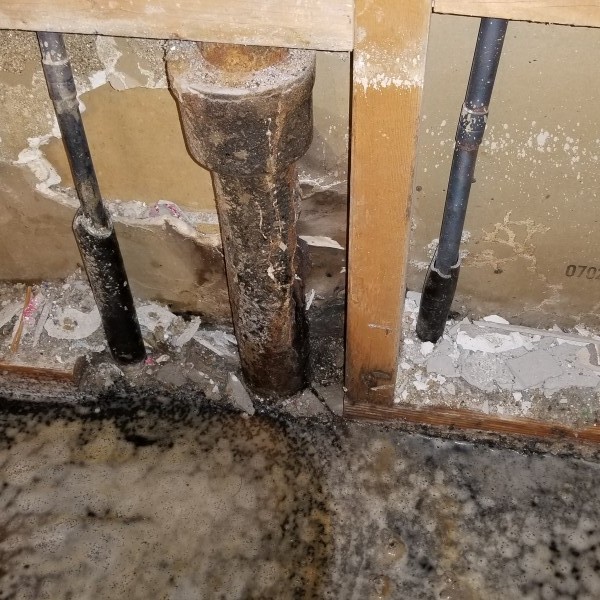Looking for Indicators of Water Damage in the Bathroom
Looking for Indicators of Water Damage in the Bathroom
Blog Article
The article down below involving Looking for Signs of Water Damage in the Bathroom is immensely insightful. Read it for your own benefit and figure out what you think about it.

The restroom is very at risk for moist accumulation and prospective water damage due to the regular use of water in it. This post uses straightforward examination techniques to help spotting water damage risks.
The regular use of water in the bathroom makes it incredibly susceptible for damp build-up as well as prospective water damage. By examining it frequently, you can decrease water related damages.
The adhering to collection of assessments is very easy to carry out and need to be done as soon as in every 3 months in order to keep your bathroom healthy as well as to prevent potential water damages caused by the bath tub, the shower, pipe joints and also plumbing, sinks, cupboards, and the bathroom
Do not neglect executing these evaluations and also be extensive while executing them. Keep in mind that these basic inspections can conserve you a lot of cash by providing early signs for water damage
Sinks and also Cabinets
Sinks as well as closets are exposed to dampness and also humidity day-to-day and are commonly overlooked. Check regularly under the sink as well as on the kitchen counter above it. Repair any kind of drip in the trap as it may recommend drainpipe problems. Browse the sink, slow-moving draining pipes may show a blocked drain. Change sink seals if they are cracked or loose.
Bath tub and also Shower
The shower and tub call for special interest and also maintenance. Inspect the floor tiles and replace if split. See to it that there is no missing grout in between the floor tiles. Inspect as well as change fractured caulking at joints where the wall surfaces meet the floor or the tub. Obstructed drains pipes and pipelines problems will stop the tub from drying as well as might show serious problems below the tub. Talk to an expert promptly to avoid architectural damage. Focus on stainings or soft locations around the bathtub walls as they might show an internal leak.
Plumbing
Signs for water damage are hard to discover considering that the majority of pipes are installed inside the walls.
Pay unique focus to floor covering and also walls moisture as well as spots as they might show an invisible plumbing problem. Check moisture levels in adjoining spaces also.
The Commode
The commode is an at risk water junction. Check the water lines and look for leakages around the commode seat, in the tube, and also under the water container. If you identify any signs of moisture on the floor around the toilet, check for leakages in the toilet edge and also container seals.
Realize that hanging commode dish antiperspirants boosts the possibilities for blockages.
TIPS TO PREVENT WATER DAMAGE IN THE BATHROOM
The average household uses approximately 80-100 gallons of water per person per day. For a family of 4, that's almost 2,500 gallons of water a week! The largest portion of this consumption comes from bathroom use. Flushing the toilet uses the most water, followed by taking a shower or bath. With that much water running through the home, water damage in the bathroom is bound to happen. Knowing how to spot signs of a water leak is essential to preventing long-term damage. This guide provides you with tips to reduce the impact of water damage on your bathroom.
CAUSES OF BATHROOM WATER DAMAGE
Pipe breaks are the most common cause of water damage we see in our daily jobs. The age of a pipe plays a large role in a pipe break as well as corrosion. Over time, the metal begins to break down, allowing water to escape. Frozen pipe breaks are also a concern in the winter months. Toilet overflows caused by paper products or children flushing inappropriate items. Degraded caulking around the toilet or bathtub can allow water seepage, sometimes behind the fixture, into the subfloor or walls. Condensation forms when the water in a pipe is cooler than the air temperature. Beads of water form on the exterior of the pipes, sometimes so much so that the water begins to drip and pool below. Sink or shower backups created by poor drainage. HOW TO PREVENT WATER DAMAGE IN YOUR BATHROOM
Inspect your toilet supply line for worn or frayed hoses and replace them as needed. Winterize your plumbing to prevent a frozen pipe break. Use vent fans to prevent condensation that can lead to mold growth. Routinely check and replace degraded caulking around your toilet or bathtub. Increase the temperature in your toilet tank and insulate your pipes during the warm summer months to keep condensation from forming. Use child safety locks on the toilets. Flush only toilet paper. "Flushable" wet wipes are actually not good for your plumbing system. Additionally, feminine hygiene products should not be flushed. Prevent water from escaping the tub or shower. Make sure shower curtains are in good condition. Inspect shower doors and replace the seal strip if necessary. Wipe up any water that accumulates on the floor and use bath mats. Water left to sit can cause damage to the tiles and flooring. Refrain from using bath products containing heavy oils to avoid a clogged drain.

I'm just very fascinated with How to Repair and Prevent Bathroom Water Damage and I really hope you liked our piece. So long as you enjoyed our post kindly remember to share it. I am grateful for your time. Don't forget to stop by our site back soon.
Try Here Report this page